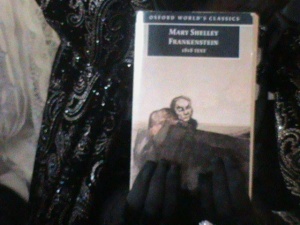“Thou art a base, proud, shallow, beggarly, three suited, hundred pound, filthy, worsted stocking knave…” (King Lear) I hope, dear reader, you don’t think I am referring to you. Perish the thought, no, I simply wanted to grab your swan-like neck and swing it in my direction. I don’t want to insult you but I do want to talk about insults and how they can be used to help children be comfortable with Shakespeare’s plays.
Children love Shakespeare if they are introduced to his works properly. Unfortunately, what should be an exciting journey with The Bard often becomes painful, embarrassing and boring. I say painful, embarrassing and boring because if the background work is not done, Shakespeare’s language can seem unapproachable. It then becomes embarrassing because the learner feels stupid. We all know that feeling when something seems to be definitely “not for us”, we cut off and it becomes boring. I am a great believer, therefore, of priming children with Shakespeare’s works well before they reach the teenage years. Children who have been introduced to the stories (it is important that children know what is happening in story form well in advance of reading a full blown play) and aspects of the language are ready to read one of Shakespeare’s plays. It is thoughtless to expect teenagers who haven’t grown up in a literary atmosphere or a book loving household to embrace a sixteenth century play without any former grounding. Fundamentally, I cannot stress the importance of introducing children to Shakespeare in a child friendly manner.
This is where insults are invaluable. I first came across this exercise whilst doing a day long workshop with The Royal Shakespeare Company. It was used as a warming up exercise to allow everyone to relax and clear out those dreadful inhibitions we can suffer from. Everyone is given a piece of card with an insult written on it. It can be something like this quotation from King Lear:
Thou art a boil, a plague sore, an embossed carbuncle in my corrupted blood.
Elizabethan music can be played whilst everyone swiftly marches or skips around the room. When the music stops you turn to the nearest person to you and shout your insult out at the top of your voice. They then shout their insult back at you. The next time, it can be whispered in a sly manner. In essence, the insults can be said in many different ways e.g. angrily or with uncontrollable laughter. It is a very good drama exercise. The insult cards can then be changed around. Incidentally, children, teenagers and adults love this as they are actually allowed to use insults without getting into trouble – it has that naughty, delicious edge to it which allows us to let off steam and then gives us the desire to learn. It also gives Shakespeare a bit of street cred before he gets the label of boring.
As children love to be creative, I have added an activity so that they can create the insults themselves.
Activity
They need to take an insult from the first two sections below (both of these are adjectives) and then add it to the third section which is a noun. Add ‘thou’ at the beginning and you have a lovely Shakespearean insult.
Section 1 – base, proud, shallow, beggarly, bawdy, filthy, coward, paunchy, gorbellied, puking, droning, dankish.
Section 2 worsted-stocking, pigeon-egg, boil-brained, onion-eyed, elf-skinned, trunk-inheriting, clapper-clawed, milk-livered, lily-livered, doghearted, hundred-pound.
Section 3 knave, rogue, bladder, bugbear, pribbling, flap-dragon, boar-pig, barnacle, apple-john, maggot-pie, coxcomb.
For instance – Thou filthy, boil-brained boar-pig.
For any children who particularly enjoy the insults, I love Elizabethan insults so much that I have them all the way through my book Will Blyton and The Stinking Shadow. Will finds Hamnet, a small boy trapped in a stone, who unfortunately hurls insults every time he opens his mouth. He is, of course, from the Elizabethan period and has had a curse put upon him by the evil, Elizabethan magician Corpsehound. His outrageous insults get Will into trouble everywhere he goes.
“Leave me be, thou fetid, old skanky breath,” says Hamnet.
So thou base, clapper-clawed rogue – I’m sorry it’s become a habit. What I really mean is “until we meet again, dear reader.”
Related articles
- The Complete Shakespeare Reader (ethelthefrog.com)
- Never Lack for an Insult Again (justificationbygrace.com)
- Shakespearean insults on demand (holykaw.alltop.com)





